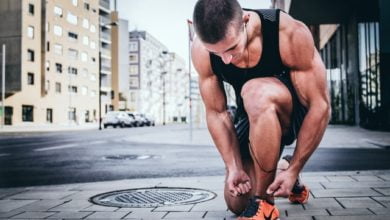6 yoga poses to help you de-stress

6 yoga poses to help you de-stress
F or a lot, vacations mean long to-do lists and not enough time to work around them. It causes stress even for the most relaxed people. But this year, release the stress dragon for happier vacations by using yoga to reduce stress.
“Usually with the stress response, as well as anxiety, the sympathetic nervous system is activated,” says Jennifer Fuller, Open Fit instructor and yoga instructor. “This is the fight, flight, and freeze response. This raises our stress hormones, including our cortisol levels. Raising this response for prolonged periods can take a toll on the body.”
Even if you’re not feeling tired and agitated, you may experience sleep problems and daytime fatigue, as well as weight gain—particularly in the tummy, some studies have indicated—headaches, indigestion, muscle tension, and other issues. But yoga can help relieve stress, even during the holidays.
Best of all, Fuller says, is that you can get major benefits just by doing a few poses carefully and slowly. Here are six more recommends.
- Start on your hands and knees on the mat.
- Loosen your toes and bring your feet together.
- Spread your knees slightly wider than hip-width apart and sit on your heels.
- Spread your arms outward and place your forehead on the mat. Keep as many breaths as you want, but at least 10.
- Begin in a tabletop position on the floor with your hands under your shoulders and your knees under your hips.
- Keeping your hips raised and your arms straight, walk your hands forward until you can rest your forehead on the floor. (Or put it on a yoga block.)
- Press your chest toward the floor and hold for 10 breaths or more. You should feel the stretch in your shoulders, upper back, and chest.
- Begin in a tabletop position, with your wrists aligned under your shoulders and your knees under your hips.
- With each inhale, arch your back and look toward the ceiling (this is the cow).
- With each exhale, insert your chin into your chest, pull the tailbone down, roll your back and shoulders (this is the cat).
- Alternate between the two for 10 or more breaths.
4. Thread the needle (change the position of the child)
- Begin in a tabletop position with your hands under your shoulders and your knees under your hips. The tops of your feet should be on the ground.
- Push your hips back and down until your butt is over your heels, then walk your hands forward until your forehead touches the floor. This position is known as the child’s position.
- Slide your right arm under your body to your left, pressing your right shoulder to the floor until you feel the stretch.
- Hold, then return to child’s position (both arms forward).
- Repeat with your left arm.
5. Sitting Spinal Twist
- Start by squatting on your carpet. Move the body away from the seated bones and sit tall with a straight spine.
- Take your right hand to your left knee and place your left hand behind you. Relax your shoulders, relax your stomach, and turn your gaze to your left shoulder to extend your neck.
- Hold for 10 breaths or so, then relax with your face forward.
- Repeat on the opposite side.
6. Legs of the wall
- Lie on your back with your left side pressed against the wall.
- Lift your knees toward your chest, rotate your body so that your butt is against the wall, and extend your legs up toward the ceiling, allowing your arms to rest naturally at your sides, palms up.
- Hold for 10 to 15 breaths or even longer.




